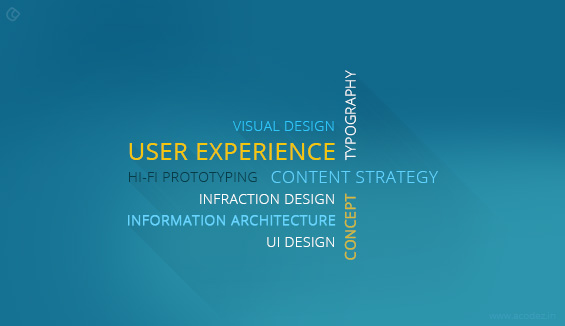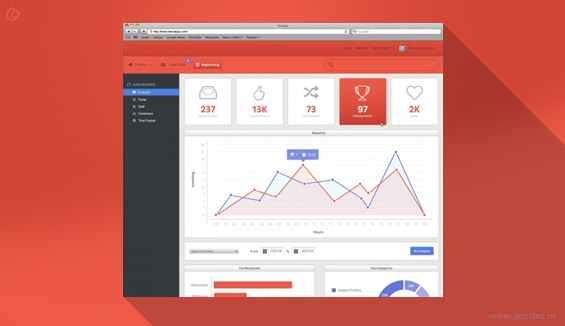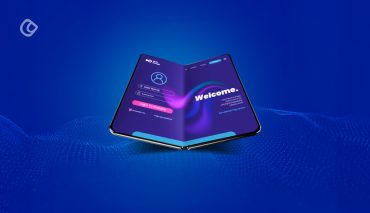Designing a website that looks beautiful is no easy task. It requires a lot of time, effort, and what-not.
Now the question is you have an app that exhibits a great design, simple and clean code and some content with SEO that works, but what is the behavior of your users?
Is there anything that they do in synch with what is expected of them?
Actions are all that we want!
Yes, true! No one is here for a charity purpose.
Of course, we might give something free in return for a favor.
When can you expect a favor from your people?
It is not seasonal or occasional. If you give them something that they are looking for they will do you favors.
In fact, we cannot call these as favors because these are the actions we expect from them when we create a design.
So, now my question is how many times have you come across situations wherein people reach your website and stay there for some time but, never take the expected action?
Also Read: 9 Tips to Create The Perfect Lead Magnet
We have all met with such instances where nothing happens, and ultimately we have no results.
Clients storm into our offices asking for the outcome, and we have no answer for why their customers do not turn in.
It’s a terrible situation giving explanations to our clients when they had handed over their dreams to us expecting miracles.
Once or twice someone might have taken an action that involved signing up for a newsletter or downloading an Ebook. But, then it never happened again.
Sad story behind many failed businesses and dejected designers!
But, you might have heard of Cinderella tales wherein the UX designers created shoes that fit perfectly into the customer’s feet.
What’s our job?
We are Cinderella’s fairy Godmother with the magic wand that will create a scenario persuading the users to take an action and guiding them across what tasks are to be fulfilled.
Regardless of whatever magic or charm we apply to our UX interfaces, there is no guarantee that people take the requited action.
So, we need to trace and find the exact juncture when our customers act as per our business demands?
The most important thing is that you need to understand the psychology of your users. Also, consider the factors that prompt them to take specific actions.
Once we gain a better insight into what are the psychological aspects of UX design, more than half the battle is won.
Here, I will provide you with tips to analyze your prospect’s behavior and then create a design that will automatically have them take the action.
As I was pondering for more information on helping my dear readers to analyze their user behavior and then create a design that will persuade them to take actions, I happened to stumble upon what UX Magazine has got to say regarding the same.
I will provide you with a synopsis of the same to help you understand what goes through the user’s minds when they visit your site or use your app and what provokes them to act as they do:
#1. No one wants to put in extra effort:

It is not that they would wish to put some extra effort, but the truth is that people are unwilling to do any work at all.
For a start:
Keep in mind no one including you, me and them, like to do a task that involves an effort.
Susan Weinschen talks about Progressive disclosure, which is what drives sales to many of those successful online stores.
Nothing but show them some information and let them decide whether they want more.
To be more precise create an information gap. It is the bridge between what they know and what they do not know.
Of course, incomplete information will generate a curiosity in anyone and they would offer anything under the sun to know everything about it.
For instance, think of a small kid reading an interesting story book. The climax is incomplete, and it says “To be continued in the next part.”
Now you know what happens next. The kid is too inquisitive and automatically drags himself into the next part.
The same applies to your people too.
Illustrate things.
We all love examples.
Elements on your page:

Several components of a design attract the user’s eye. A single object can even ward them off.
A situation wherein I would recommend taking a page out of the E-commerce websites books. People come there because they have made up their mind to shop.
Some of these sites are so simple and elegant that no one can refrain themselves from purchasing, at least, one product.
Some designers always do a lot of extra work. Like they keep on adding up elements on and on to the site just to make it appear too complicated.
#2. Keep it simple, short and precise:
Often when it comes to providing information we are all too generous. We get our content and copywriters to work on creating a lot of content for our users.
Of course, they need convincing! But, remember it is not necessary that they have the patience or time to go through all the bragging you’ve done over there.
We want to persuade them into taking some action.
Easily scannable information with headers and short blocks is bliss.
#3. To err is human:
Mistakes occur while accomplishing a task.
But, then why do you want to provide a space for creating errors.
Give them an opportunity to solve the mistakes or let them take it easy when an error happens.
You do not want them to panic for having committed a mistake that was not deliberate.
We love “Undo”. Think of all those times you were using Ctrl-Z when creating a UX design.
Now you know why it is mandatory to provide your people with an Undo Option.
#4. Forgetfulness is in our genes:
If you believe that your user will remember whatever actions they have taken from the first to the fourth page, then you are very much mistaken.
Memorizing the tasks accomplished from the first to the fourth page is a far fetched thing when you can not even take the liberty to expect that they will remember the tasks they performed at the top of the page by the time they reach the bottom.
So, it looks like we cannot feed several things into the human memory box at a time.
#5. Attention to details:
It appears to be too formal. What I meant is just grab their attention. Include this simple formula in your UI designs because it engages users.
Design or its components that are different and unique is what we need. It will attract their attention.
But psychologically people tend to get confused when they find things that are different and inhabitual.
Over-justification can hurt:

Persuading people to take an action and the factor that motivates them are closely related.
Smashing Magazine points out instances where rewards motivate people.
As they have mentioned, there is a bridge between extrinsic and intrinsic motivation.
These two things motivate people to behave or act the way they do.
For instance, the satisfaction that comes from a gift or award such as cash back, or discount or some offers (buy 1 and get one free) lures users. These form the extrinsic factors.
The intrinsic factors include the happiness or delight that comes from doing or indulging in some activity.
Like for instance, you are reading a Neil Patel blog on SEO Tactics to help businesses in 2016, and you find it useful and helpful. You decide to share it on Social Media.
There is no reward for this particular action other than the happiness of sharing useful information with the world.
Here I would like to discuss the over-justification effect.
So, what happens?
Suppose you have an app which is specializing in online courses for driving.
You want the maximum number of candidates to enroll.
Now you are giving some rewards like maybe “Cash” upon completing say ten sessions of the online driving course.
There is a section who are too lazy to learn but are in fact looking for motivation to drive themselves into learning the basics of driving.
They will enroll in!
Now there is another section who already know driving very well but will enroll just for the reward.
Here, the problem is there would be an increase in the number who register for the course, but once you withdraw the cash offer they leave.
Why not put up a cashback offer upon successful completion of the course?
It means they need to pay before they enroll, but can avail the cash once they have completed the course. People who are experts at driving will never want to take up the game.
Also Read: E-commerce 2016: Trends that will live today, tomorrow and forever
But, you can find people who were looking for motivation to learn driving use your app.
The next is what motivates people?
Now, we know how to inspire people to take an action.
Next is the road to inspiration.

Suppose you are a travel website offering tours and travel services and promoting road trips.
Everything you say sounds to be awesome.
But, what if they have no bikes or cars? How do they go on a road trip?
BJ Fogg’s Behavioral model connects these three factors that are the influence, ability, and trigger.
There should be some factors that would trigger them to take the action.
Like a partner or a friend who is ready to join them on the trip to make it splendid.
Double happiness will trigger their interest.
Designing a persuasive interface:

Now you are aware of the three psychological moves necessary to get your user do what is expected of them.
Here, I will brief out how to embed these three factors in them:
How to get them change their behavior?
Before that, you need to identify what motivates them?
Do you know who your customers are?

Suppose yours is an app that promotes dog grooming and spa!
Why in the whole world would someone want to get their dogs groomed from a pet salon when they can do it at home?
Your customers are pet owners or to be more precise are dog lovers and dog owners.
You have a new dog grooming salon in the town. There might be dog owners who take their pets to the salon for grooming, but why should they come to you when they have a regular place where they get their dogs groomed?
Your app tells them when the dogs need to get a grooming? It will alert them if the dog has been caught with some infection and you provide help with all these at your salon.
Complete health care and grooming for the dogs.
Your ultimate aim is to drive them to your salon.
The question is why should they groom their dogs at a salon?
Why do you want them to take their dog to your salon today?
What are the health benefits of grooming their dogs from an expert?
What particular things do you offer so that they come to your salon leaving their regular place?
Now you know the demographics of your people.
You need to learn how they respond to your products.
What drives them to your products?
These factors will help you design a UX interface that maps customer experience, user journey, and buyer personas into one.
Also, with these aspects, you can identify the “influential” factor, and it can give you some clues on what are the other two factors.
The next thing is ability.
There are many questions to be answered before you launch this app.
We already discussed the user demographics.
You need to keep in mind the location or the place your users are most likely to be in when they design the app.
The next thing is the problems they might encounter when using your app.
What are the skills or capacity they possess?
These are some of the questions for which you need to find answers.
How is it possible?
You have to do some testing.
Get your prospective users to test your app and use it as they would do it in any situation.
It might seem to be a waste of resources, time and money.
But, it would be great to help you develop and enhance your app further.
This will help to identify errors and make the necessary improvements to help the people recover and undo.
The next thing is the factor that triggers a behavior.
We want action.
There needs to be a factor that brings out a certain change in their behavior and motivates them to take an action.
How do you reach that point?
A simple thing that our technology provides is sending notifications about your product.
Mobile communication bridges gaps and brings people together.
Everything is so easy today with mobile!
Ensure that the notifications do not annoy them.
Here, comes another psychological aspect that drives engagement.
Let them decide when they need a trigger. Hand them the remote control and you can sit back and watch the game while they play it.
Here again you can take your prospective users help to find out what brings about a change in their behavior. The factor that triggers them.
This is just a beginning to how UX and psychology needs to be knitted together for persuading people to take some action.
There are more to it and we will be sharing it soon as and when we get our hands over it We are in the research phase and assure you that we will find something sizzling soon.
Do you consider user psychology when designing? How far has it fetched you users?
Share your thoughts and comments with us…
Be with the UI UX design company in India that has an expert team to design your beautiful website to maximize ROI.
Acodez IT Solutions is a web design company based in India providing web design and development solutions. We have a wide base of customers in India and abroad.
We are also a digital marketing solutions provider helping businesses identify what their online needs are and then promote them accordingly.
We can help you too.
For further enquiries contact us today.
Looking for a good team
for your next project?
Contact us and we'll give you a preliminary free consultation
on the web & mobile strategy that'd suit your needs best.











